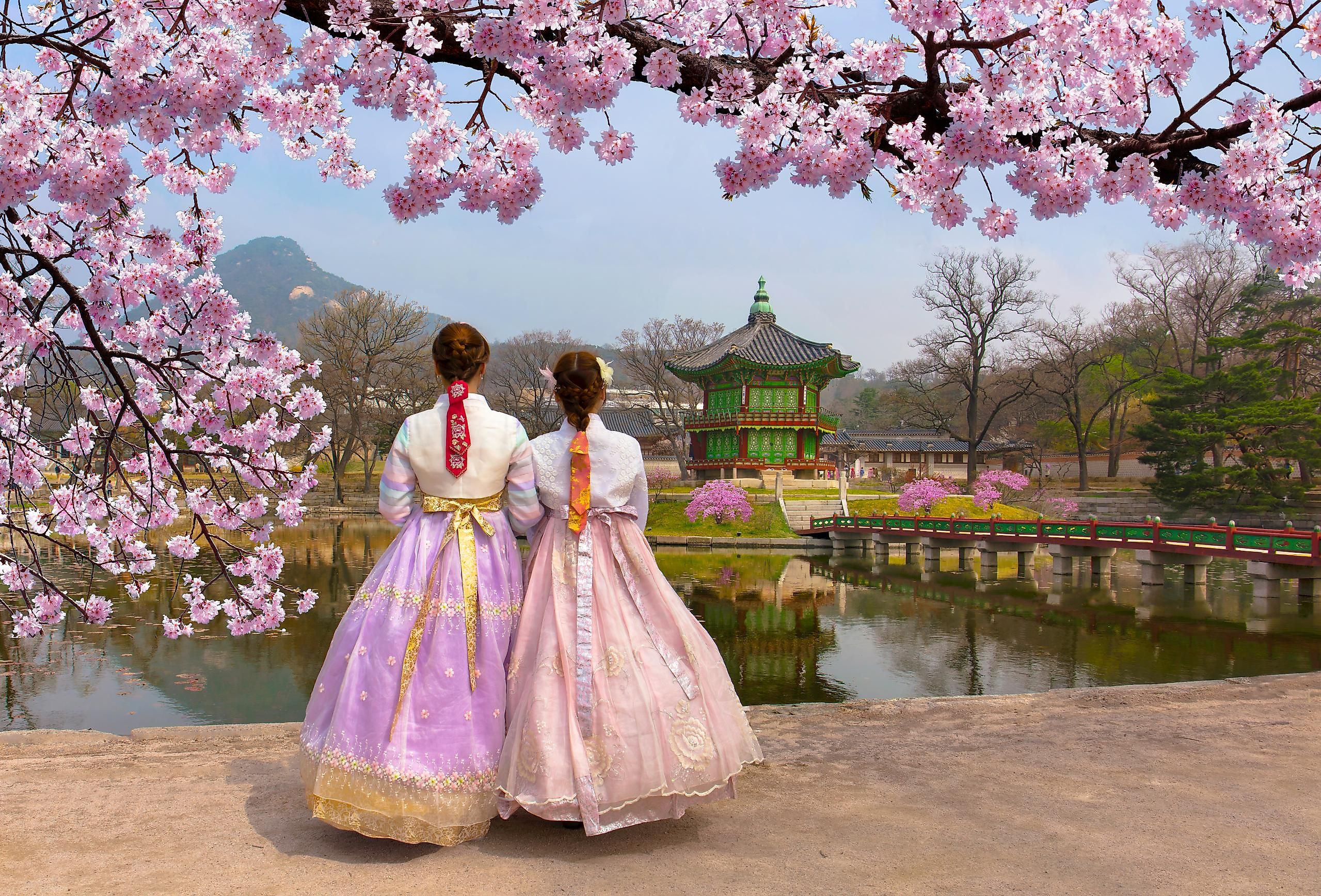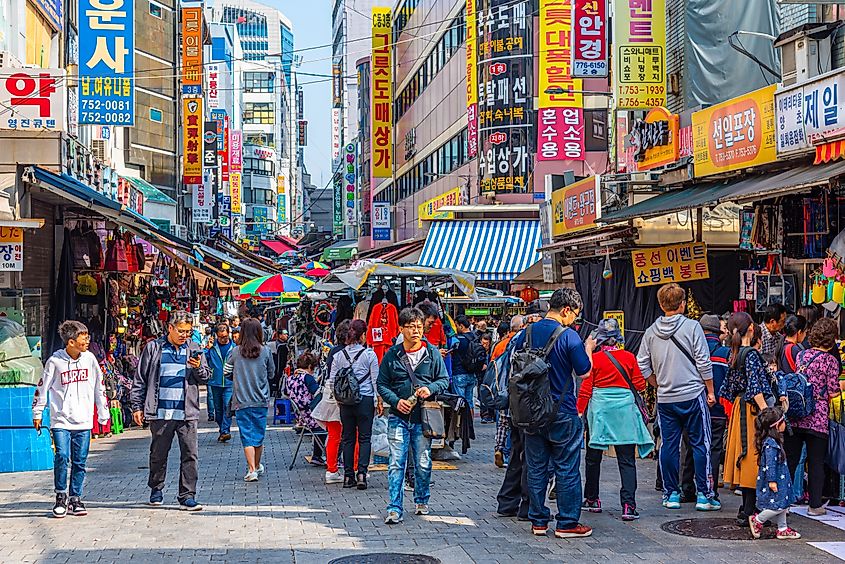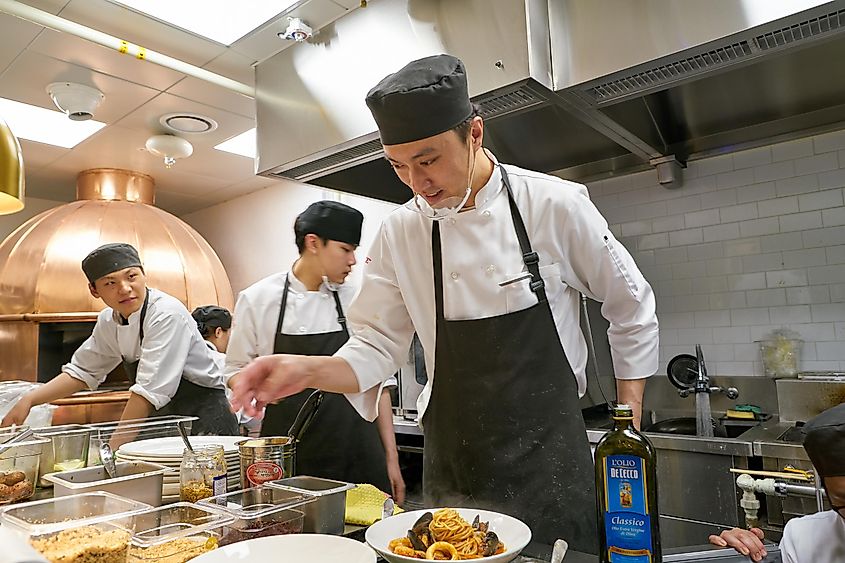
Understanding South Korean Etiquette: A Guide for Americans
With almost 52 million people residing in South Korea, it's a country where living closely with one another is the norm, especially in bustling cities. South Korea boasts a powerful sense of cultural unity, with 97% of the population being native Koreans and of the most homogenous nations in the world. While Americans might be given a pass on some of the cultural nuances, embracing and understanding South Korean customs can make interactions smoother and more rewarding.

How to greet in Korean - Hello = Annyeong-hasimnikka
There are some basic rules to follow when being introduced to someone in South Korea.
The most important thing to realize going into a social situation is that there is a well-established social hierarchy, and understanding it informs both a great deal of verbal and non-verbal communication. In general, this hierarchy is based on offering respect to those who are older or in superior professional positions.
It is always best to be humble and assume that who you are talking to is above you in the social hierarchy. Offering an excess of respect is far more acceptable than too little and will be laughed off the same way your dad would make the terrible joke, "Mr. Smith is my father; call me Jim."
The key to making a good impression on an initial meeting is patience and attentiveness. If meeting a group of people, address each in turn, taking care to acknowledge each with a slight bow. Handshakes are common, but wait for the eldest individual to extend their hand first.
Greeting Customs Key Points:
- Over-politeness will never hurt.
- Use both hands when shaking hands.
- A polite bow is required; note how deep the other person bows, then bow slightly deeper.
- Give them your full attention; do not be distracted during an initial meeting.
- Wait to be introduced by a third party at social gatherings. Aggressive friendliness is not encouraged.
- When leaving a group, bow to them individually and thank them for their company.
Korean Eating And Drinking Etiquette

Food and drink is a huge part of Korean social interaction. Korean hosts will be excited to introduce their food and culture to a foreign guest. You will be encouraged to try multiple dishes and accept each suggestion and offer eagerly. Picky eaters are not common in Korea and refusing to try something because it is new could be seen as a slight against the person offering it. Koreans are extremely proud of their cuisine and will be very interested in how a Westerner reacts.
Food and drink will be offered and served, no one should pour their own drink. Ensuring that older individuals are served first, a drink will then be poured to younger people. It is expected that all guests should keep the pace set by the eldest or most senior attendee. If possible, everyone should remain at the table until the most senior individual indicates that the evening is over.
Never point with chopsticks or use them for anything other than their intended purpose. Chopsticks should be placed on the table neatly and sided by side when not in use. Do not leave them sticking out of a bowl of rice. This has symbolic connotations associated with funeral traditions.
Tipping is not expected or warranted for the vast majority of establishments. Servers make a fair wage and do not rely on tips to supplement their income. A few Western-style hotels or restaurants may add a gratuity for large groups. However, this is unusual. If you become a regular at a restaurant or bar, it is not uncommon to become friendly with the staff and owner. Small physical (not monetary) gifts can be offered to deserving staff in this scenario.
Key Points:
- Remember to serve others before yourself.
- Remove shoes when entering most restaurants. Watching other guests and taking cues from them will help inform of the correct way to behave.
- Be respectful of the food and the establishment, and complement the food that warrants it rather than criticizing other dishes.
- Be mindful of gestures made with cutlery, especially chopsticks.
- It is very important not to seem greedy or glutinous. The first offer of second helpings should be refused.
- Tipping is not required, except in certain rare situations. Follow the lead of those around you.
Business Dress Etiquette

Korean professionals favor conservative and functional attire. For men, a dark suit and tie are recommended. Facial hair is tolerated by western visitors. However, among Koreans, it is considered dirty and unprofessional. Other than wedding rings, it is unusual for men to wear jewelry.
For women, a conservative outfit is ideal. A business suit will never be the wrong choice. Heels are worn to work, to dinner, and in general, anywhere you might be seen in public. Be subtle with jewelry and accessories. South Korea is a nation that believes that less is more in this regard.
In general, Korea has adopted Western attire, and by dressing in a semi-formal manner, it would be hard for anyone to get the wrong impression.
Key Points:
- Dress conservatively and professionally.
- Facial hair is considered unprofessional.
- Jewelry on women is acceptable. However, body piercings other than earrings are not common.
The Exchange of Money, Gifts, or Documents
Gifts may be given in most arranged personal interactions. When giving or receiving any item two hands should be used, it is also advisable to fully acknowledge the person and not seem dismissive or distracted. A polite bow can punctuate the exchange will show thanks and humility.
If you have been handed a business card, reciprocate with your own and examine theirs before placing in your wallet or purse. Make sure to treat the card carefully, and make sure not to write notes on it.
Thank You = KamsahamnidaYou're Welcome = Anieyo
Key Points:
- Accept all gifts (including business cards) with two hands.
- Never write on a business card you receive.
- Upon receiving a gift, if it is wrapped, you should open it later, a gift of equal value should then be offered in return.
- Thank you cards for gifts and dinners are expected and appreciated.
Conversation Etiquette Guide

At social gatherings feel free to make small talk, with sports, TV, and food all as safe topics. Refrain from criticizing anything related to Korea, and specifically Korean culture. Stay positive throughout the interaction.
Korean people are very nationalistic and proud of their country. Commenting on the success of the South Korean economy or recent sporting victories will be very well received. Showing an interest in their culture by asking questions is also a very good icebreaker. Do not be alarmed should salaries and other personal topics be discussed openly. This does not carry the same taboo as it does in North America.
Key Points:
- Respect the culture and actions of South Korea.
- Showing an interest in South Korean history, food, and politics will endear you to many.
- Very personal questions are often asked in initial introductions; do not be offended. Only answer what you feel comfortable.











